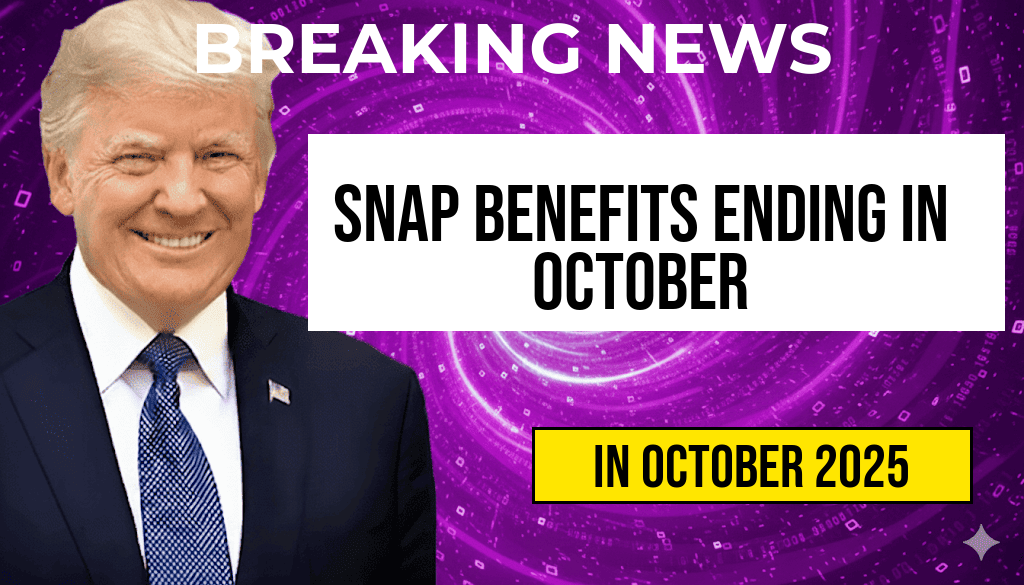Starting October, millions of Americans relying on the Supplemental Nutrition Assistance Program (SNAP) will see significant changes to their benefits as part of a comprehensive overhaul implemented by federal authorities. The policy shifts aim to recalibrate the program’s benefit structure, ending temporary increases introduced during the COVID-19 pandemic and tightening eligibility criteria. This transition impacts a broad demographic, including low-income families, seniors, and individuals with disabilities, sparking concern and debate across communities and political lines. The move comes amid broader discussions about fiscal responsibility, program sustainability, and the nation’s ongoing efforts to strike a balance between providing essential support and managing federal spending.
Background of the SNAP Program and Pandemic-Era Adjustments
The SNAP program, administered by the U.S. Department of Agriculture (USDA), is the nation’s largest nutrition assistance initiative, helping over 40 million Americans afford food each month. During the COVID-19 pandemic, the federal government temporarily increased SNAP benefits through emergency allotments, providing additional financial support to millions facing economic hardship. These enhancements aimed to mitigate food insecurity amid widespread job losses and economic disruption.
However, as the economic situation stabilizes and pandemic-related restrictions ease, policymakers have moved to phase out these temporary boosts. The October overhaul marks the culmination of a process that began with legislative adjustments in 2022, designed to return benefits to pre-pandemic levels and tighten eligibility standards.
Key Changes in SNAP Benefits and Eligibility
Reduction of Emergency Benefits
- Temporary increases in monthly benefits will end, resulting in an average decrease of approximately 25% for recipients in many states.
- States that implemented broad emergency allotments will revert to standard benefit calculations based on income, household size, and expenses.
Stricter Income and Asset Limits
- The federal government has tightened income thresholds, requiring applicants to demonstrate lower income levels to qualify.
- Asset limits—such as savings and property holdings—have been reintroduced or reduced in some states, limiting eligibility for households with significant assets.
- States are also given discretion to impose stricter criteria, potentially excluding more individuals from qualifying.
Impact on Beneficiaries
| State | Average Monthly Benefit Before October | Projected Benefit After Overhaul | Estimated Benefit Reduction |
|---|---|---|---|
| California | $250 | $180 | $70 |
| Texas | $200 | $150 | $50 |
| Florida | $210 | $160 | $50 |
These reductions are expected to strain household budgets, especially for those already facing financial hardship, potentially leading to increased food insecurity and reliance on charitable aid.
Political and Public Response
Supporters’ Perspective
Proponents argue that scaling back benefits aligns with fiscal responsibility and encourages employment. They contend that the temporary pandemic-era enhancements were unsustainable long-term and that tightening eligibility helps ensure resources are directed to those most in need.
Opposition Concerns
Critics warn that the reductions risk worsening food insecurity among vulnerable populations. Advocacy groups warn that many households will be forced to make difficult choices, such as skipping meals or reducing nutritional intake. Some states are also under pressure from local organizations and lawmakers to reconsider or mitigate the impact through targeted programs or waivers.
Broader Context and Future Outlook
The October overhaul of SNAP benefits arrives amid ongoing debates about social safety nets and economic recovery strategies. While the federal government emphasizes fiscal prudence, many state-level officials and advocacy groups are calling for measures to cushion the blow, including increased access to job training, affordable housing, and healthcare.
As the transition unfolds, officials urge beneficiaries to review their eligibility and plan accordingly. The USDA has launched outreach campaigns to inform recipients of the changes and available resources, emphasizing the importance of understanding new benefit calculations and eligibility standards (USDA SNAP Program Details).
Experts suggest that the impact of these reductions will vary widely depending on local economic conditions and community support systems. Some analysts warn that unless accompanied by broader social programs, the benefit cuts could exacerbate disparities and hinder recovery efforts for low-income households.
Frequently Asked Questions
What is the reason for the SNAP benefits ending in October?
The SNAP benefits are ending in October due to a scheduled overhaul of the program, which involves policy changes and funding adjustments intended to modify how assistance is distributed.
How will the end of SNAP benefits impact recipients?
Recipients may face loss of benefits or reduced support, which could affect their ability to purchase food and essentials. It is important for affected individuals to explore alternative assistance programs.
Are there any alternative resources available for those losing SNAP benefits?
Yes, individuals can seek support from local food banks, community assistance programs, and state-specific aid options to help bridge the gap after the SNAP benefits end.
When will the new policy changes related to SNAP take effect?
The policy overhaul is scheduled to be implemented starting in October, with the benefits ending at the close of this month as part of the transition.
What should recipients do to prepare for these changes?
Recipients should review their eligibility for other assistance programs, plan their food budget, and stay informed about local support options to adapt to the upcoming changes effectively.

Leave a Reply